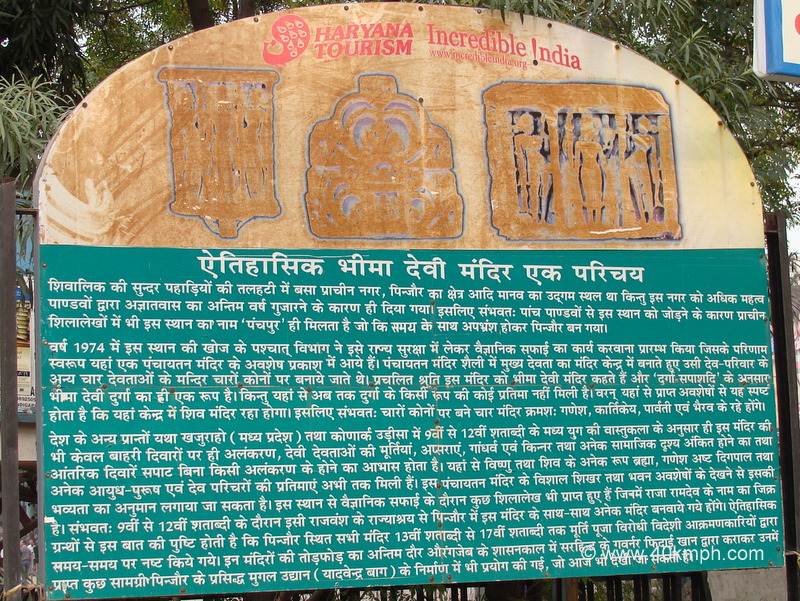Historical Bhima Devi Temple An Introduction – This photo was taken at the Local Bus Stand, Sector-5 in Panchkula (Haryana).
The ancient city situated at the foothills of the beautiful hills of Shivalik, the area of Pinjore was the original place of primitive human beings, but this city was given more importance only because of the last year of exile by the Pandavas. Therefore, possibly due to the association of this place with the five Pandavas, the name of this place is also found in the ancient inscriptions as ‘Panchpur’, which became Pinjore after being corrupted over time.
After discovering this place in the year 1974, the department took it under state security and started scientific cleaning work, as a result of which the remains of a Panchayatan Temple have come to light here. In the Panchayatan temple style, the temple of the main deity was built in the center and the temples of the other four deities of the same deity family were built at the four corners. Popular saying calls this temple Bhima Devi Temple and according to ‘Durga Saptashati‘ Bhima Devi is a form of Durga but till now no idol of any form of Durga has been found from here. Rather, it is clear from the remains obtained from here that there must have been a Shiva temple in the center. That’s why probably the four temples built at the four corners must have been of Ganesha, Kartikeya, Parvati, and Bhairav respectively.
According to the architecture of the middle ages of the 9th to 12th century in other provinces of the country like Khajuraho (Madhya Pradesh) and Konark Orissa, this temple also has ornamentation only on the outer walls, idols of deities, Apsaras, Gandharva, and Kinnar and many social symbols. The scene appears to be carved and the interior walls are plain without any ornamentation. Many forms of Vishnu and Shiva, Brahma, Ganesha, Ashta Digpal, and statues of many ordnance men and god attendants have been found from here. The magnificence of this Panchayatan temple can be gauged from the view of its huge pinnacle and building remains. Some inscriptions have also been found from this place during scientific cleaning, in which the name of Raja Ramdev is mentioned. Probably during the 9th to 12th century, many temples would have been built along with this temple in Pinjore from the kingdom of this dynasty. Historical texts confirm that all the temples at Pinjore were destroyed from time to time by foreign invaders who opposed idolatry from the 13th century to the 17th century. The last round of demolition of these temples was carried out by Fidai Khan, the governor of Sirhind during Aurangzeb‘s reign, and some of the material obtained from them was also used in the construction of Pinjore’s famous Mughal garden (Yadavendra Bagh), which can be seen even today.
